We all have a soft spot for adorable creatures, but some use their cute factor for less-than-innocent purposes. Yes, Mother Nature has her own tricksters that weaponize their sweet appearances to lure in unsuspecting prey. Here’s a list of ten predators that prove looks can be deceiving.
1. The Deceptive Charm Of The Margay
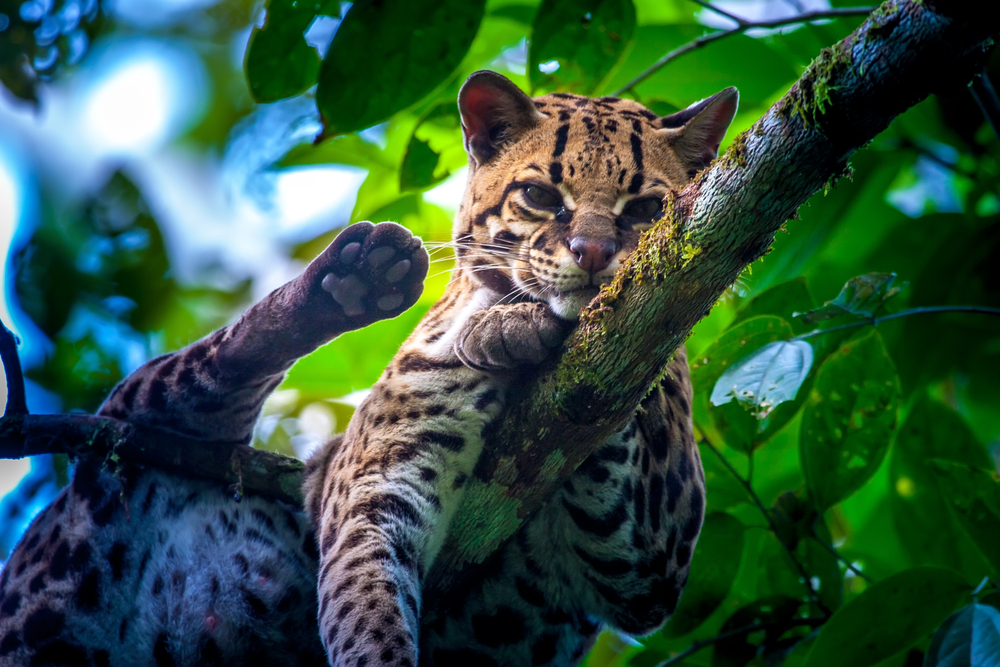
Picture this: an adorable, tiny wild cat with large, soulful eyes and a soft, spotted coat that would melt the heart of any nature lover. This is the margay, a feline found in the dense rainforests of Central and South America. While it might look like a harmless pet, the margay is a skilled predator. And here’s the twist—it mimics the sounds of its prey to catch them off-guard. According to National Geographic, margays have been observed mimicking the calls of baby pied tamarin monkeys to lure adult tamarins closer, showcasing their deceptive hunting strategy. Once they’re within striking distance, the margay pounces with agility that would make any big cat envious.
In a world where survival often depends on speed or strength, the margay’s clever strategy sets it apart. This feline’s cuteness may seem like a façade, but it’s a critical component of its hunting arsenal. And while a margay might not look intimidating, its ability to manipulate its prey’s instincts makes it a formidable predator. So next time you find yourself enchanted by a margay’s innocent gaze, remember that those eyes might be plotting their next meal.
2. The Cunning Kookaburra With A Killer Laugh
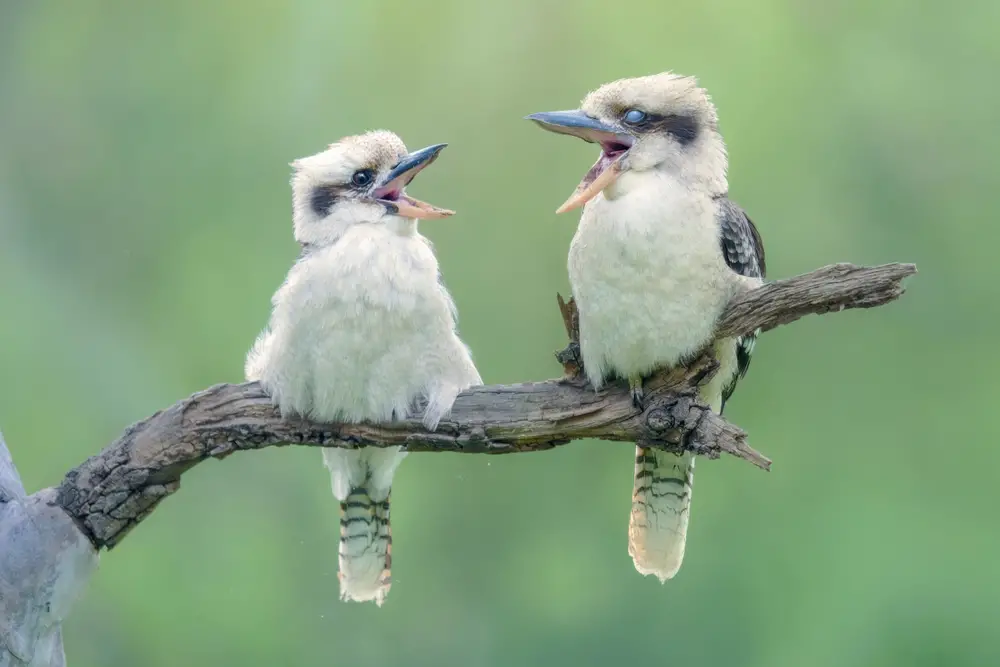
The kookaburra’s iconic laugh is a sound that often evokes images of the Australian outback. With its comical expression and stout body, this bird looks like it belongs in a cartoon. Yet, this avian comedian is more than just a pretty face with a funny laugh; it’s a cunning hunter. By mimicking the sounds of other animals, kookaburras can trick their prey into revealing their hiding spots. According to the San Diego Zoo, they feed on insects, small reptiles, and even other birds, using their powerful beaks to dispatch their meals swiftly.
Despite its jovial exterior, the kookaburra’s laughing call can be the last sound its prey hears. This bird exemplifies the dual nature of cuteness and cunning, proving that even the most innocuous-seeming creatures can be skilled predators. Its ability to adapt and deceive through mimicry is a testament to the complex strategies some animals employ to survive. So, while it might be great for a chuckle, the kookaburra is laughing all the way to a full stomach.
3. The Innocent-Looking Assassin Bug
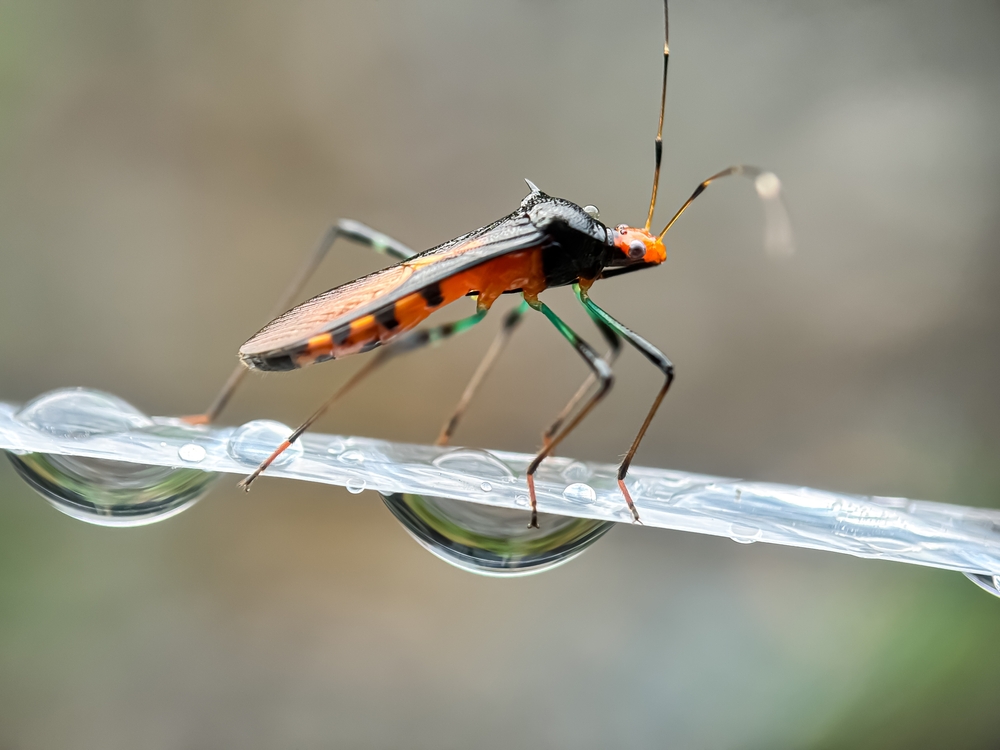
Assassin bugs might not be the first thing that comes to mind when you think “cute,” but some species wear a disguise that makes them look harmless. Certain juvenile assassin bugs even mimic ants to blend seamlessly into their environment. By resembling their prey—or in some cases, creatures that the prey doesn’t find threatening—they can get close enough to launch a surprise attack. Among the many species of assassin bugs, some have evolved bright, inviting colors that might remind a predator of a flower, rather than a threat.
These deceptive traits allow assassin bugs to excel in the art of surprise. They pierce their prey with a sharp proboscis, injecting a lethal saliva that liquefies the insides of their victims, turning them into a nutritious soup. While this sounds gruesome, it’s a successful strategy for survival in the bug-eat-bug world. So next time you spot what looks like a harmless little insect, think twice—it might just be an assassin in disguise.
4. The Alluring Glow Of The Anglerfish
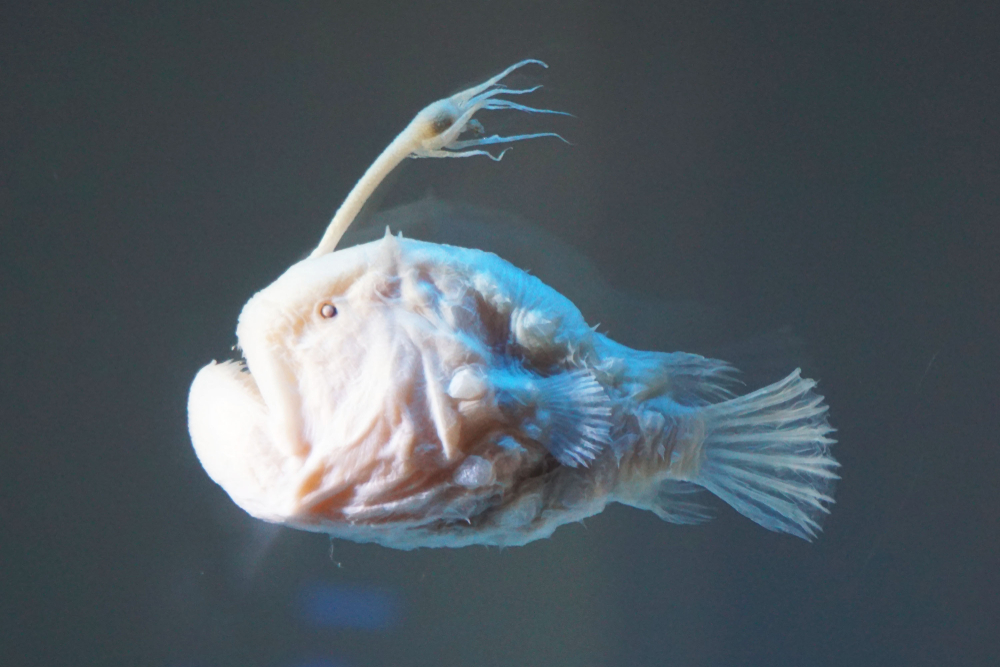
The anglerfish is the poster child for deceptive charm beneath the ocean waves. With its grotesque appearance, it might not scream cuteness to humans, but to its prey, the glowing lure it dangles is irresistible. Deep in the dark ocean, this bioluminescent appendage shines like an inviting beacon, drawing curious fish closer. Once the prey is tantalizingly near, the anglerfish snaps its deadly jaws shut with lightning speed.
This deadly beauty of the deep uses its natural charm to make a meal out of the unwary. Its ability to thrive in the hostile environment of the deep ocean is a testament to evolution’s creativity. The anglerfish proves that sometimes, beauty lies not in the eye of the beholder, but in the effectiveness of the deception. In the murky depths, cuteness and cunning are a deadly combination.
5. The Crafty Octopus With Disarming Looks
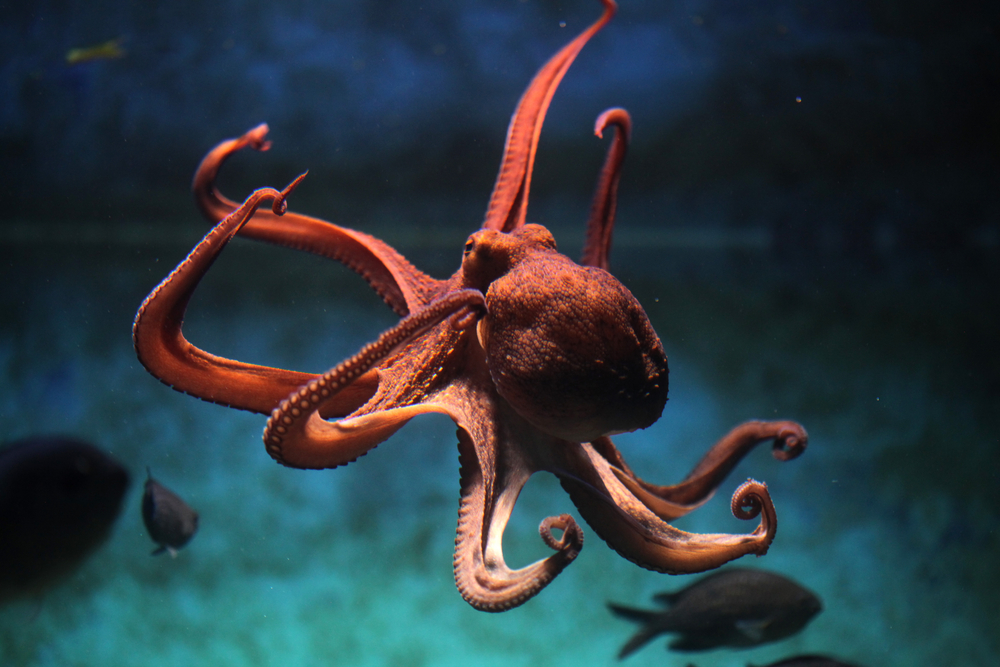
Octopuses are fascinating creatures, known for their intelligence and ability to change shape and color at will. Some species, like the mimic octopus, take this to an art form, adopting the appearance of more dangerous sea creatures to avoid predators and lure prey. With its soft body and innocent eyes, an octopus can seem like a gentle ocean dweller. But don’t be fooled—beneath the charming exterior lies a predator with a cunning mind.
Capable of squeezing into the tiniest of spaces, octopuses can ambush their prey with surprising speed. They use their tentacles to envelop and capture unsuspecting crabs and fish, pulling them into a beak that cracks open shells with ease. The octopus embodies the duality of nature—a creature that balances beauty and brainpower, using both to survive in a world full of challenges. Its ability to charm and disarm makes it one of the ocean’s most enigmatic predators.
6. The Playful Yet Predatory Dolphin

Dolphins are often seen as the playful, social butterflies of the ocean, known for their intelligence and friendly demeanor. However, beneath that charming smile is a predator finely tuned to hunt. Dolphins use intricate strategies, working together in pods to herd fish into tight balls, making it easier to catch them. Their playful nature is also a tactic, as they communicate and coordinate with clicks and whistles that prey might not recognize as a threat until it’s too late.
These marine mammals are adept at using their surroundings to their advantage, often driving fish towards the shore or trapping them against coral reefs. The combination of intelligence, speed, and cooperative hunting makes dolphins formidable predators despite their gentle appearance. While they may seem like the ocean’s fun-loving pranksters, their strategic prowess in hunting is a reminder that charm can be an effective tool in the wild.
7. The Adorably Deceptive Red Fox
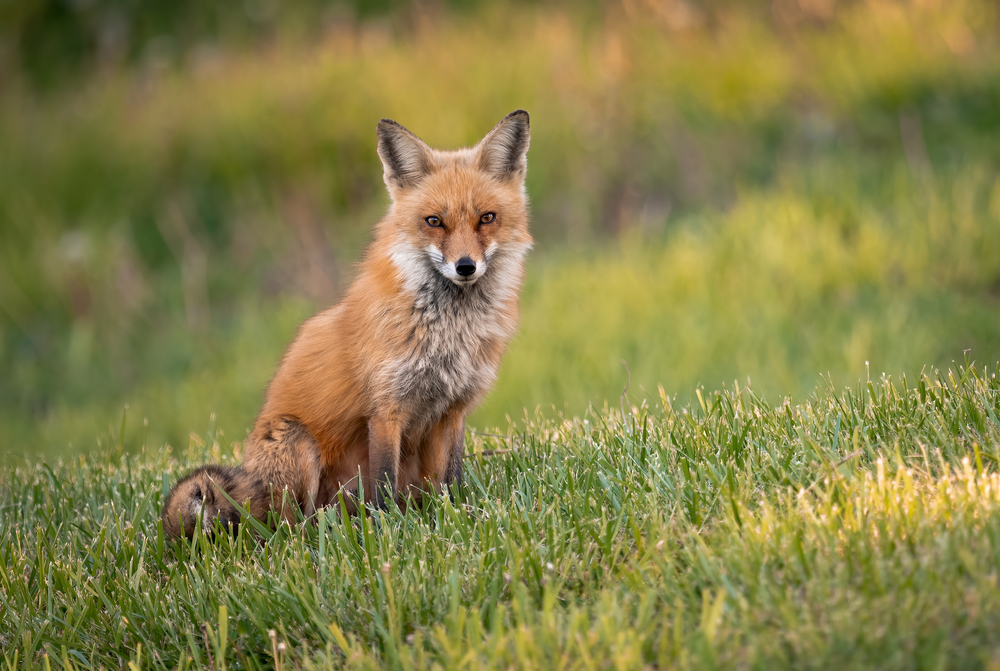
With its bushy tail, pointed ears, and sleek red coat, the red fox is the epitome of cuteness in the animal kingdom. But this charming exterior masks a highly skilled predator known for its cunning and adaptability. The red fox uses its acute sense of hearing to detect the faintest sounds of prey beneath the snow or earth. They can leap high into the air to pounce on mice or rabbits, using their agility to catch prey off guard.
Red foxes are also known to engage in playful behaviors that can disarm both prey and predators. This playfulness, combined with their natural intelligence, makes them highly effective hunters. Whether they’re tiptoeing through a field or playfully chasing each other, their antics are all part of a strategy to survive and thrive. So while they may look like they belong in a children’s storybook, red foxes are masters of the art of survival.
8. The Sneaky Sea Otter With A Sneaker Appetite
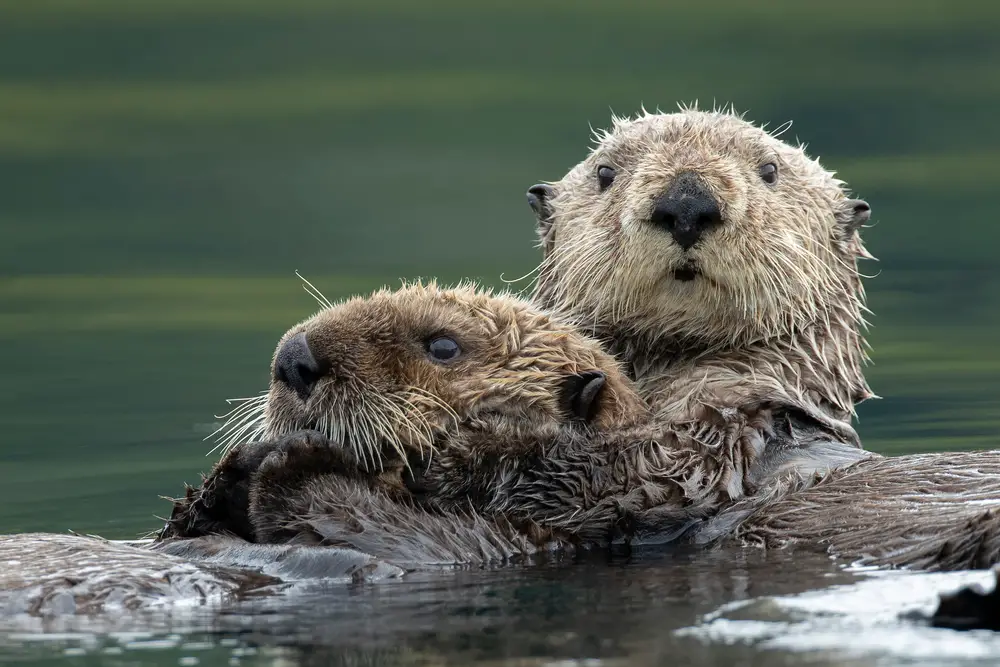
Sea otters are the teddy bears of marine life, with their fluffy fur and endearing habits like floating on their backs while cracking open shellfish. However, behind those innocent eyes lies a predator with a voracious appetite for seafood. They use tools like rocks to break open the hard shells of crabs, clams, and sea urchins, showcasing their intelligence and dexterity. Sea otters play a crucial role in their ecosystems, keeping sea urchin populations in check and thus preserving kelp forests.
Their playful demeanor is not just endearing but also reflects a complex social structure and high intelligence. Sea otters are incredibly resourceful, and their ability to use tools sets them apart as one of the ocean’s most clever predators. Though they may appear to be nothing more than adorable ocean dwellers, sea otters prove that even the cutest animals can be crafty hunters. So while their antics might make you smile, remember that their survival depends on their predatory skills.
9. The Innocent Facade Of The Snowy Owl
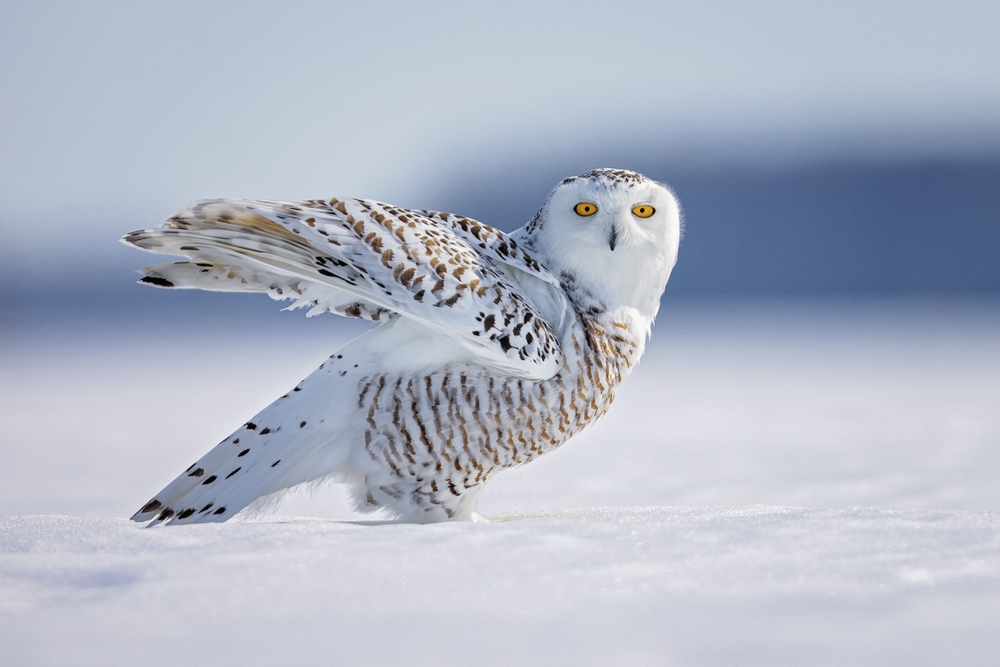
The snowy owl, with its striking white plumage and wide, captivating eyes, is a symbol of grace and beauty in the frigid Arctic. But don’t let its serene appearance fool you—this bird of prey is a formidable hunter. With keen eyesight and acute hearing, snowy owls can detect prey beneath the snow, swooping down with surprising speed to catch rodents and small birds. They rely on their silent, efficient flight to sneak up on prey, taking advantage of their natural camouflage in the snow.
In the harsh Arctic environment, the snowy owl’s hunting skills are essential for survival. Their ability to adapt to changing conditions and their predatory expertise make them one of nature’s most captivating hunters. While they may look like gentle winter spirits, snowy owls are relentless when it comes to finding their next meal. So next time you admire a snowy owl’s beauty, remember that it’s as much a skilled predator as it is a graceful icon.
10. The Fluffy Yet Fierce Barn Owl
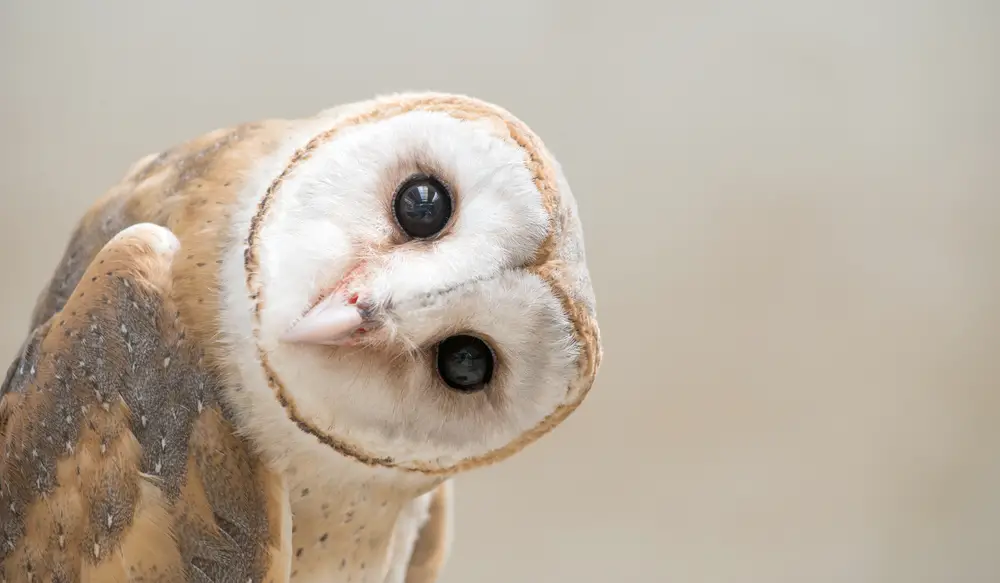
Barn owls are known for their heart-shaped faces and soft, feathery appearance, making them look like the quintessential wise but gentle forest dwellers. However, beneath their fluffy exterior lies a predator with remarkable hunting skills. With exceptional low-light vision and the ability to locate prey by sound alone, they are adept nocturnal hunters. Barn owls fly silently through the night, their soft feathers muffling sounds, allowing them to swoop down on unsuspecting rodents without warning.
Their ability to hunt efficiently makes them invaluable in controlling pest populations in agricultural areas. The barn owl’s seemingly gentle nature belies the lethal precision with which it hunts, proving that appearances can be deceiving. While they may look like they belong in a fairy tale, barn owls are real-world examples of how cuteness and cunning can coexist in the animal kingdom. So while you might be tempted to admire them from afar, remember that those big eyes are always on the hunt.
